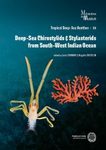About this book
Language: French
After focusing on the 71 marine mammals (volume 1) and the 28 ungulates and lagomorphs (volume 2) present in France, the third volume of the Atlas des Mammifères Sauvages is devoted to carnivores and primates.
The 33 carnivores present in France are often the subject of passionate debate as predators can interfere with human activities. They are therefore subject to varied protection and legal statuses. Some are classified as protected species, sometimes strictly, others are subject to legal destruction of individuals, yet others are included on the list of game species, or even among the species likely to cause damage, and, finally, some are considered invasive alien species. For all of them, we have nevertheless obtained a significant amount of knowledge in recent years thanks in particular to the establishment of national monitoring networks, national action plans and the activities of local associations. Conversely, for primates, no national synthesis exists today although the French territory is home to ten species (eight in Guyana, one introduced to the Antilles and one introduced to Mayotte) and several studies have been carried out locally.
Based on more than 370,000 data points acquired between 2000 and 2020 and involving the participation of 76 editors, this volume represents a unique and essential decision-making tool to improve the cohabitation of humans with these species. Managers and administrations will find in this work all the information and local specificities on the carnivores and primates populating their territory, whether it be the threats they face, their impacts or even the actions or studies implemented locally. They will also be able to find, in specific monographs, the conservation issues for each species. Likewise, scientists and naturalists will be able to access current information on the distribution of these 43 species, their biology and ecology, the state and trends of evolution of their populations, as well as ongoing research work.
As with the previous volumes, this work could not have been produced without the mobilization of many experts and organisations who agreed to contribute by sharing their data and knowledge.
Summary in French:
Après s’être intéressé aux 71 Mammifères marins (volume 1) puis aux 28 ongulés et Lagomorphes (volume 2) présents en France, l’Atlas des Mammifères Sauvages se consacre, dans ce troisième volume, aux Carnivores et aux Primates.
Les 33 Carnivores présents en France font souvent l’objet de débats passionnés. Prédatrices, ces espèces peuvent interférer avec les activités humaines. Elles bénéficient en conséquence de statuts de protection et juridiques très variés. Certaines sont classées comme espèces protégées, parfois strictement, parfois pouvant faire l’objet de destructions légales d’individus, d’autres sont inscrites sur la liste des espèces gibier, voire parmi les espèces susceptibles d’occasionner des dégâts, quelques-unes enfin sont considérées comme des espèces exotiques envahissantes. Toutes néanmoins ont bénéficié ces dernières années d’une importante amélioration de leurs connaissances grâce notamment à la mise en place de réseaux nationaux de suivi, de plans nationaux d’actions et à la dynamique des associations locales. À l’inverse, pour les Primates, aucune synthèse nationale n’existe aujourd’hui bien que notre territoire héberge 10 espèces (8 en Guyane, 1 introduite aux Antilles et 1 introduite à Mayotte) et que plusieurs études soient réalisées localement.
Valorisant plus de 370 000 données acquises entre 2000 et 2020 et impliquant la participation de 76 rédacteurs, ce volume représente un outil unique et indispensable d’aide à la décision pour améliorer notamment la cohabitation des humains avec ces espèces. Les gestionnaires et les administrations trouveront dans cet ouvrage toutes les informations et spécificités locales sur les Carnivores et Primates peuplant leur territoire, que ce soit les menaces qu’ils subissent, leurs impacts ou encore les actions ou études mises en œuvre localement. Ils pourront aussi trouver, dans les monographies spécifiques, les enjeux de conservation pour chaque espèce. De même, les scientifiques et naturalistes pourront accéder à des informations actuelles sur la répartition de ces 43 espèce, leur biologie et leur écologie, sur l’état et les tendances d’évolution de leurs populations ainsi qu’aux travaux de recherche en cours à leur sujet.
Comme pour les précédents volumes, cet ouvrage n’aurait pu être réalisé sans la mobilisation de très nombreux experts et structures, qui ont accepté de contribuer en partageant leurs données et leurs connaissances.
Customer Reviews





![Atlas des Mammifères Sauvages de France, Volume 3: Carnivores et Primates [Atlas of Wild Mammals of France, Volume 3: Carnivores and Primates] Atlas des Mammifères Sauvages de France, Volume 3: Carnivores et Primates [Atlas of Wild Mammals of France, Volume 3: Carnivores and Primates]](http://mediacdn.nhbs.com/jackets/jackets_resizer_xlarge/26/263780.jpg?height=620)
![Atlas des Mammifères Sauvages de France, Volume 3: Carnivores et Primates [Atlas of Wild Mammals of France, Volume 3: Carnivores and Primates]](http://mediacdn.nhbs.com/jackets/jackets_resizer/26/263780.jpg)
![Atlas des Mammifères Sauvages de France, Volume 3: Carnivores et Primates [Atlas of Wild Mammals of France, Volume 3: Carnivores and Primates]](http://mediacdn.nhbs.com/jackets/jackets_resizer/26/263780_01.jpg)
![Atlas des Mammifères Sauvages de France, Volume 3: Carnivores et Primates [Atlas of Wild Mammals of France, Volume 3: Carnivores and Primates]](http://mediacdn.nhbs.com/jackets/jackets_resizer/26/263780_02.jpg)
![Atlas des Mammifères Sauvages de France, Volume 3: Carnivores et Primates [Atlas of Wild Mammals of France, Volume 3: Carnivores and Primates]](http://mediacdn.nhbs.com/jackets/jackets_resizer/26/263780_03.jpg)
![Atlas des Mammifères Sauvages de France, Volume 3: Carnivores et Primates [Atlas of Wild Mammals of France, Volume 3: Carnivores and Primates]](http://mediacdn.nhbs.com/jackets/jackets_resizer/26/263780_04.jpg)
![Atlas des Mammifères Sauvages de France, Volume 3: Carnivores et Primates [Atlas of Wild Mammals of France, Volume 3: Carnivores and Primates]](http://mediacdn.nhbs.com/jackets/jackets_resizer/26/263780_05.jpg)
![Atlas des Mammifères Sauvages de France, Volume 3: Carnivores et Primates [Atlas of Wild Mammals of France, Volume 3: Carnivores and Primates]](http://mediacdn.nhbs.com/jackets/jackets_resizer/26/263780_06.jpg)
![Atlas des Mammifères Sauvages de France, Volume 3: Carnivores et Primates [Atlas of Wild Mammals of France, Volume 3: Carnivores and Primates]](http://mediacdn.nhbs.com/jackets/jackets_resizer/26/263780_07.jpg)
![Atlas des Mammifères Sauvages de France, Volume 3: Carnivores et Primates [Atlas of Wild Mammals of France, Volume 3: Carnivores and Primates]](http://mediacdn.nhbs.com/jackets/jackets_resizer/26/263780_08.jpg)
![Atlas des Mammifères Sauvages de France, Volume 3: Carnivores et Primates [Atlas of Wild Mammals of France, Volume 3: Carnivores and Primates]](http://mediacdn.nhbs.com/jackets/jackets_resizer/26/263780_09.jpg)
![Atlas des Mammifères Sauvages de France, Volume 3: Carnivores et Primates [Atlas of Wild Mammals of France, Volume 3: Carnivores and Primates]](http://mediacdn.nhbs.com/jackets/jackets_resizer/26/263780_10.jpg)
![Atlas des Mammifères Sauvages de France, Volume 3: Carnivores et Primates [Atlas of Wild Mammals of France, Volume 3: Carnivores and Primates]](http://mediacdn.nhbs.com/jackets/jackets_resizer/26/263780_11.jpg)
![Atlas des Mammifères Sauvages de France, Volume 3: Carnivores et Primates [Atlas of Wild Mammals of France, Volume 3: Carnivores and Primates]](http://mediacdn.nhbs.com/jackets/jackets_resizer/26/263780_12.jpg)
![Atlas des Mammifères Sauvages de France, Volume 3: Carnivores et Primates [Atlas of Wild Mammals of France, Volume 3: Carnivores and Primates]](http://mediacdn.nhbs.com/jackets/jackets_resizer/26/263780_13.jpg)
![Atlas des Mammifères Sauvages de France, Volume 3: Carnivores et Primates [Atlas of Wild Mammals of France, Volume 3: Carnivores and Primates]](http://mediacdn.nhbs.com/jackets/jackets_resizer/26/263780_14.jpg)
![Atlas des Mammifères Sauvages de France, Volume 3: Carnivores et Primates [Atlas of Wild Mammals of France, Volume 3: Carnivores and Primates]](http://mediacdn.nhbs.com/jackets/jackets_resizer/26/263780_15.jpg)
![Atlas des Mammifères Sauvages de France, Volume 3: Carnivores et Primates [Atlas of Wild Mammals of France, Volume 3: Carnivores and Primates]](http://mediacdn.nhbs.com/jackets/jackets_resizer/26/263780_16.jpg)
![Atlas des Mammifères Sauvages de France, Volume 3: Carnivores et Primates [Atlas of Wild Mammals of France, Volume 3: Carnivores and Primates]](http://mediacdn.nhbs.com/jackets/jackets_resizer/26/263780_17.jpg)
![Atlas des Mammifères Sauvages de France, Volume 3: Carnivores et Primates [Atlas of Wild Mammals of France, Volume 3: Carnivores and Primates]](http://mediacdn.nhbs.com/jackets/jackets_resizer/26/263780_18.jpg)
![Atlas des Mammifères Sauvages de France, Volume 3: Carnivores et Primates [Atlas of Wild Mammals of France, Volume 3: Carnivores and Primates]](http://mediacdn.nhbs.com/jackets/jackets_resizer/26/263780_19.jpg)
![Atlas des Mammifères Sauvages de France, Volume 3: Carnivores et Primates [Atlas of Wild Mammals of France, Volume 3: Carnivores and Primates]](http://mediacdn.nhbs.com/jackets/jackets_resizer/26/263780_20.jpg)
![Atlas des Mammifères Sauvages de France, Volume 3: Carnivores et Primates [Atlas of Wild Mammals of France, Volume 3: Carnivores and Primates]](http://mediacdn.nhbs.com/jackets/jackets_resizer/26/263780_21.jpg)
![Atlas des Mammifères Sauvages de France, Volume 3: Carnivores et Primates [Atlas of Wild Mammals of France, Volume 3: Carnivores and Primates]](http://mediacdn.nhbs.com/jackets/jackets_resizer/26/263780_22.jpg)
![Atlas des Mammifères Sauvages de France, Volume 3: Carnivores et Primates [Atlas of Wild Mammals of France, Volume 3: Carnivores and Primates]](http://mediacdn.nhbs.com/jackets/jackets_resizer/26/263780_23.jpg)
![Atlas des Mammifères Sauvages de France, Volume 3: Carnivores et Primates [Atlas of Wild Mammals of France, Volume 3: Carnivores and Primates]](http://mediacdn.nhbs.com/jackets/jackets_resizer/26/263780_24.jpg)
![Atlas des Mammifères Sauvages de France, Volume 3: Carnivores et Primates [Atlas of Wild Mammals of France, Volume 3: Carnivores and Primates]](http://mediacdn.nhbs.com/jackets/jackets_resizer/26/263780_25.jpg)
![Atlas des Mammifères Sauvages de France, Volume 3: Carnivores et Primates [Atlas of Wild Mammals of France, Volume 3: Carnivores and Primates]](http://mediacdn.nhbs.com/jackets/jackets_resizer/26/263780_26.jpg)
![Atlas des Mammifères Sauvages de France, Volume 3: Carnivores et Primates [Atlas of Wild Mammals of France, Volume 3: Carnivores and Primates]](http://mediacdn.nhbs.com/jackets/jackets_resizer/26/263780_27.jpg)
![Atlas des Mammifères Sauvages de France, Volume 1: Mammifères Marins [Atlas of Wild Mammals of France, Volume 1: Marine Mammals] Atlas des Mammifères Sauvages de France, Volume 1: Mammifères Marins [Atlas of Wild Mammals of France, Volume 1: Marine Mammals]](http://mediacdn.nhbs.com/jackets/jackets_resizer/23/233077.jpg)
![Atlas des Mammifères Sauvages de France, Volume 2: Ongulés et Lagomorphes [Atlas of Wild Mammals of France, Volume 2: Ungulates and Lagomorphs] Atlas des Mammifères Sauvages de France, Volume 2: Ongulés et Lagomorphes [Atlas of Wild Mammals of France, Volume 2: Ungulates and Lagomorphs]](http://mediacdn.nhbs.com/jackets/jackets_resizer/25/252352.jpg)




![Les Coléoptères Saproxyliques de France: Catalogue Écologique Illustré [The Saproxylic Beetles of France: Illustrated Ecological Catalogue]](http://mediacdn.nhbs.com/jackets/jackets_resizer_medium/24/247761.jpg?height=150&width=107)
![Atlas des Reptiles du Cameroun [Atlas of Reptiles of Cameroon]](http://mediacdn.nhbs.com/jackets/jackets_resizer_medium/17/172841.jpg?height=150&width=100)

![Atlas des Orchidées Sauvages de la Guadeloupe [Atlas of Wild Orchids of Guadeloupe]](http://mediacdn.nhbs.com/jackets/jackets_resizer_medium/12/127834.jpg?height=150&width=99)

![Les Crustacés Décapodes des Petites Antilles: Avec de Nouvelles Observations pour Saint-Martin, la Guadeloupe et la Martinique [The Crustacean Decapods of the Lesser Antilles: With New Observations for Saint-Martin, Guadeloupe and Martinique]](http://mediacdn.nhbs.com/jackets/jackets_resizer_medium/24/245203.jpg?height=150&width=106)
![Les Reptiles des Pyrénées [The Reptiles of the Pyrenees]](http://mediacdn.nhbs.com/jackets/jackets_resizer_medium/22/228868.jpg?height=150&width=107)
![Atlas des Poissons et des Crustacés d'Eau Douce de Nouvelle Calédonie [Atlas of Fish and Crustaceans of New Caledonia]](http://mediacdn.nhbs.com/jackets/jackets_resizer_medium/14/144631.jpg?height=150&width=98)

![Atlas des Oiseaux Marins et Cétacés du Sud Gascogne: De l'Estuaire de la Gironde à la Bidassoa [Atlas of Seabirds and Cetaceans of Southern Gascony: From the Estuary of Gironde to Bidasoa]](http://mediacdn.nhbs.com/jackets/jackets_resizer_medium/24/245210.jpg?height=150&width=105)
![Guide de la Faune Profonde de la Mer Méditerranée: Explorations des Roches et Canyons Sous-Marins des Côtes Françaises [Guide to the Deep-Sea Fauna of the Mediterranean Sea: Explorations of the Submarine Rocks and Canyons of the French Coasts]](http://mediacdn.nhbs.com/jackets/jackets_resizer_medium/23/236563.jpg?height=150&width=106)
![Atlas des Poissons et des Crustacés d'Eau Douce de la Martinique [Atlas of Freshwater Fish and Crustaceans of Martinique]](http://mediacdn.nhbs.com/jackets/jackets_resizer_medium/13/133745.jpg?height=150&width=98)














![Flora of Cambodia, Laos and Vietnam, Volume 36 [Faune et Flore Tropicales, Volume 47]](http://mediacdn.nhbs.com/jackets/jackets_resizer_medium/24/245033.jpg?height=150&width=101)
![Flora of Cambodia, Laos and Vietnam, Volume 37 [Faune et Flore Tropicales, Volume 52]](http://mediacdn.nhbs.com/jackets/jackets_resizer_medium/26/266628.jpg?height=150&width=103)
![Les Chauves-Souris de Guyane [The Bats of French Guiana]](http://mediacdn.nhbs.com/jackets/jackets_resizer_medium/13/134247.jpg?height=150&width=100)




